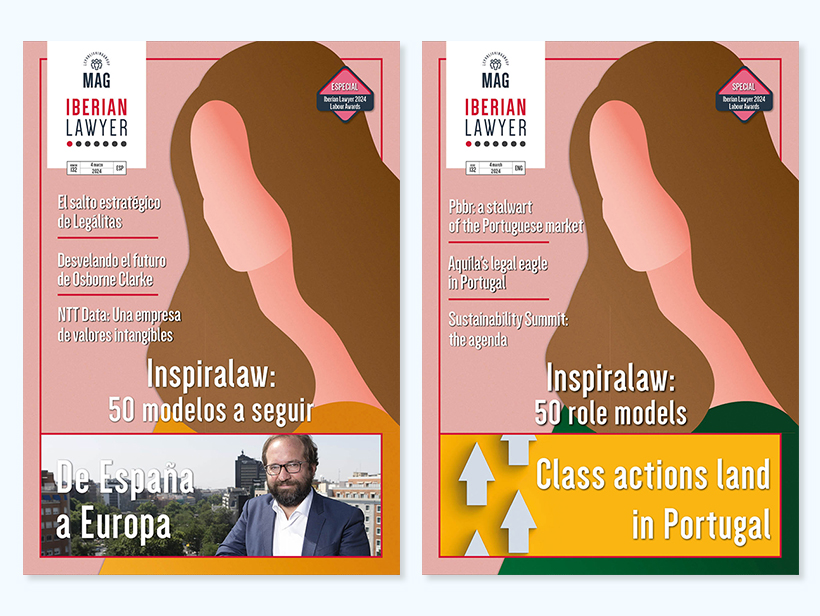Portugal’s new public procurement law: a step towards modernisation – Barrocas Sarmento Neves
The main objective of Portugal’s Decree Law 18/2008 of 29 January 2008 (Public Contracts Code – PCC) was to transpose Directives 2004/17 and 2004/18 of the European Parliament and Council dated 31 March 2004 to the Portuguese legal framework. However, it went much further than that and represents a profound modification to the Portuguese Public Procurement Law (PPL).
Los letrados Artur Filipe da Silva y Sophie Frazão, de Barrocas Sarmento Neves, explican en este artículo que el Decreto Ley 18/2008, del 29 de enero, por el que se aprueba el Código de los Contratos Públicos, constituye una profunda modificación del régimen sustantivo de los contratos públicos. Este código determina, en un instrumento singular y jurídico, todos los reglamentos relacionados con el suministro público y con los contratos de obras públicas. Es la opinión de los autores que el nuevo código debería mejorar la gestión de los recursos públicos y de la financiación privada.
The PCC codified in one legal instrument all the provisions applying to public supply and public works contracts thereby streamlining and consolidating the previously disperse and confusing consultation process.
Our view is that, on balance, the PCC will improve public and private financial resource management, namely, the rules regarding the apportionment of liability for errors and omissions in the bid documents and performance of the contracts. Specifically it introduces two new rules relating to pre-contractual procedures and contract performance.
Pre-contractual procedures and the options available to public entities in selecting counterparts have seen substantial changes. These are now more straightforward and adjusted to the market and include not only technical amendments but also a shift in the entire approach adopted. The value of the contract is no longer the criteria for choosing the procedure. Indeed, the converse is true, a decision is taken first on the procedure which accordingly limits the value of the contract. For example, if a public body needs to buy office furniture, and uses the direct awarding procedure, the value of the contract has a limit of €75,000; if it orders the building of new premises through the same procedure, the contract will be limited to €150,000.
Another important reform is the change in perspective on what should be considered the contract value. To determine the value of a contract a system has been created which cures many of the irregularities in the prior methods of estimating these values. Public authorities are now free to choose the procedure which limits the value of the contract to be executed.
The contract value is no longer viewed from the perspective of the maximum amount which the public entities have available to spend but rather how much will the awarded benefit from the contract. This benefit includes: the price to be paid by the public authorities or other private/public entities; the value of any future commitments (eg a building lease or granting a concession) and the value of other advantages conceded to the bidder (eg tax exemptions or reductions or other authorisations and licences).
Another major modification is the evaluation procedure and the definition of relevant evaluation criteria. On this particular issue the legislator´s efforts to make the procedure transparent and objective should be recognised. Although the model has been simplified some difficulties have already been encountered by those who working in the supply departments of public authorities.
A brief reference needs to be made to the adoption of a new procedure: competitive dialogue. It is a major innovation introduced by the European Directives and can only be used when it is difficult / impossible for the public entities to adequately define their needs. It is reserved for highly complex contracts (like private finance initiative (PFI) and public private partnerships (PPP)) and the procedure involves the public body inviting a few economic agents to help it define the terms of the proposed awarding procedure, and asking these agents to present an offer in the procedure. It allows constructive cooperation between the public body and the market, ensuring a greater accuracy of the contract.
Finally, the creation of an alternative electronic system to the traditional paper-based procedure which covers announcements, bid documentation, auctions and all notifications and communications, has been adapted to the actual market requirements and has lead to considerable saving in time. This represents a clear bet on information technologies and a step towards modernisation.
Artur Filipe da Silva (afsilva@barrocas.com.pt) and Sophie Frazão (sfrazão@barrocas.com.pt) are both in the Public Law team at Barrocas Sarmento Neves.














